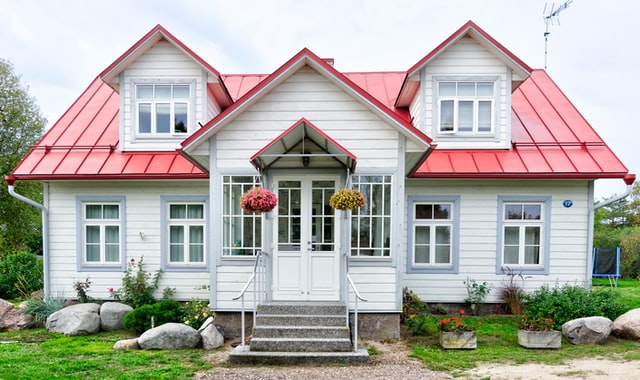What is Homeowners Insurance?

Homeowners insurance provides financial protection against disasters. A standard policy insures the home itself and the things you keep in it.
Homeowners insurance is a package policy. This means that it covers both damage to your property and your liability or legal responsibility for any injuries and property damage you or members of your family cause to other people. This includes damage caused by household pets.
Damage caused by most disasters is covered but there are exceptions. The most significant are damage caused by floods, earthquakes and poor maintenance. You must buy two separate policies for flood and earthquake coverage. Maintenance-related problems are the homeowners’ responsibility.
What is Covered by Standard Homeowners Insurance?
Most standard homeowners insurance policies include four essential types of coverage:
- Coverage for the structure of your home
- Coverage for your personal belongings
- Liability protection
- Additional living expenses if you are temporarily unable to live in your home because of an insured disaster
- Liability
1. The Structure of Your House
Your homeowners policy pays to repair or rebuild your home if it is damaged or destroyed by fire, hurricane, hail, lightning or other disasters listed in your policy. It will not pay for damage caused by a flood, earthquake or routine wear and tear. When purchasing coverage for the structure of your home, remember this simple guideline: Purchase enough coverage to rebuild your home.
Most policies also cover detached structures such as a garage, tool shed or gazebo—generally for about 10 percent of the amount of insurance you have on the structure of your home.
2. Your Personal Belongings
Your furniture, clothes, sports equipment and other personal items are covered if they are stolen or destroyed by fire, hurricane or other insured disasters. The coverage is generally 50 to 70 percent of the insurance on the structure of your home. The best way to determine if this is enough coverage is to conduct a home inventory.
Personal belongings coverage includes items stored off-premises— this means you are covered anywhere in the world. Some companies limit the amount to 10 percent of the amount of insurance you have for your possessions. You also have up to $500 of coverage for unauthorized use of your credit cards.
Expensive items like jewelry, furs, art, collectibles and silverware are covered, but there are usually dollar limits if they are stolen. To insure these items to their full value, purchase a special personal property endorsement or floater and insure the item for its officially appraised value.
Trees, plants and shrubs are also covered under standard homeowners insurance—generally for about $500 per item. Trees and plants are not covered for damage by wind or disease.
3. Liability protection
Liability covers you against lawsuits for bodily injury or property damage that you or family members cause to other people. It also pays for damage caused by your pets. So, if your son, daughter or dog accidentally ruins a neighbor’s expensive rug, you are covered. (However, if they destroy yourrug, you’re out of luck.)
The liability portion of your policy pays for both the cost of defending you in court and any court awards—up to the limit stated in your policy documents.
Liability limits generally start at about $100,000, however, it’s a good idea to discuss whether you should purchase a higher level of protection with your insurance professional. If you have significant assets and want more coverage than is available under your homeowners policy, consider purchasing an umbrella or excess liability policy, which provides broader coverage, including claims against you for libel and slander, as well as higher liability limits.
Your policy also provides no-fault medical coverage, so if a friend or neighbor is injured in your home, he or she can simply submit medical bills to your insurance company. This way, expenses are paid without a liability claim being filed against you. It does not, however, pay the medical bills for your own family or your pet.
4. Additional living expenses (ALE)
ALE pays the additional costs of living away from home if you cannot live there due to damage from a an insured disaster. It covers hotel bills, restaurant meals and other costs, over and above your usual living expenses, incurred while your home is being rebuilt.
Keep in mind that the ALE coverage in your homeowners policy has limits—and some policies include a time limitation. However, you can generally increase the amount of ALE coverage for an additional premium.
Your ALE coverage limit is separate from the amount available to rebuild or repair your home. Even if you use up your ALE your insurance company will still pay the full cost of rebuilding your home up to the policy limit.
5. Liability
A typical homeowners insurance policy provides liability coverage when someone not living with you is injured while on your property. Suppose a visitor trips over your broken porch step. Bodily injury liability coverage may help pay for your resulting legal expenses or the visitor\’s associated medical bills if you are found at fault.
How to save more money on your homeowner insurance?
Homeowner insurance is a real deal and sometimes it is very costly. however, lots of insurance companies provide additional discounts available for the homeowner:
- have a burglar alarm or a fire sprinkler system installed in your home
- maybe lower rate if you live in close proximity to a fire station
- have a impact-resistant roofing
- new roof
- auto and home insurance with the same company or agency
Please contact us and find out if you are qualify for more discount. our licensed agent can help identify the discounts and savings for which you qualify.
